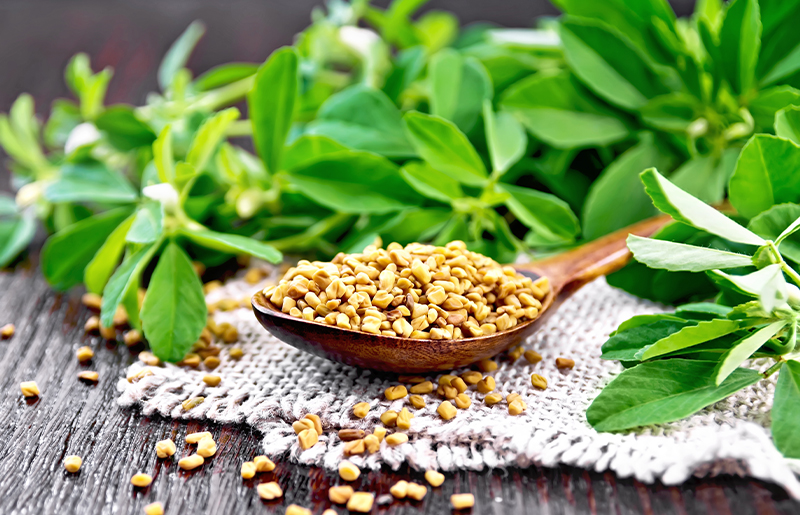
Harris County Master Gardener Explores Fenugreek
By Karen McGowan, Harris County Master Gardener
Moving into the final, official full month of summer, we are turning from our drought-tolerant herb series toward a companion herb to ethnic vegetables, complementing this month’s overall gardening focus. In mind of the August ethnic theme I looked to incorporate one herb from the field (get it?) of several potential choices, an herb that is successfully used in more than a single ethnic cuisine, or two. With that, this month’s herb selection is fenugreek.
Ancient civilizations cultivated fenugreek; the discovery of fenugreek seeds dating back to 4000 BC in present-day Iraq supports this theory. Fenugreek seeds were also discovered in the tomb of Egyptian pharaoh Tutankhamen, further suggesting that fenugreek was revered by the ancients. The Romans were known to utilize fenugreek as an ingredient for flavoring wine, and Jewish priest, historian, and scholar Titus Flavius Josephus noted that fenugreek was grown as a staple food in Galilee in the 1st century AD.
Fenugreek is an herb closely resembling common clover, and is native to the Mediterranean, southern Europe, and western Asia. It is widely used both in culinary and folk remedies, throughout the world, including as an ingredient in spice blends and a flavoring agent in foods, beverages, and tobacco. Fenugreek extract is also used in the production of some soaps and cosmetics. Although there is little conclusive scientific evidence for the use, fenugreek has specifically long been used in North Africa, Asia, and southern Europe for diabetes and to increase milk supply in women who are breastfeeding. The seeds are used to cleverly approximate the smell and taste of maple syrup, which they parallel.
Two very popular usages in ethnic cooking of fenugreek include one with which many of us are familiar: Curry powder. Probably the most identifiable of all the Indian subcontinent spices, curry seasoning is actually an Indian-inspired British invention, typically including turmeric, coriander, cumin, fenugreek, and red pepper. The combination produces a distinctive yellow color to food when added, and a warmly pungent kick of heat. A potentially somewhat less known yet still popular use of fenugreek is in the European spice blend “Khmeli Suneli” a Georgian mix of warm, nutty, grassy, and bitter spices including fenugreek, coriander, savory, and black peppercorns. Back to the Indian subcontinent, another highly popular blend (now widely available in America, although like most blends, you can make your own) featuring fenugreek is “Garam Masala”.
While fenugreek can be grown successfully in other planting zones, for a single season, in zones 9-11 it can be grown year- round and usually lasts one or two years. The plant prefers low to medium moisture conditions, and it can be prone to mildew, making it somewhat of a challenge to grow in one of south Texas’ more rainy years. With a tolerance for light conditions ranging from full sun to partial shade and not too selective about soils, fenugreek is a good candidate for crop rotation and will improve depleted garden soils. Fenugreek’s mature size is predictably 12–24" high and 12–24" wide, dependent upon growing conditions.
Whether or not you decide to try growing fenugreek, it is definitely an herb worth familiarizing oneself with, for a multitude of reasons and uses. Here’s to cooler temperatures sooner rather than later!
Source: Harris County Master Gardeners Urban Dirt Newsletter (August 2023 Edition)
About Urban Dirt
Each month, Harris County Master Gardeners publishes an informative, resourceful newsletter entitled "Urban Dirt". This article was derived from the August 2023 edition. To read the August 2023 edition of this newsletter, click the button below.






